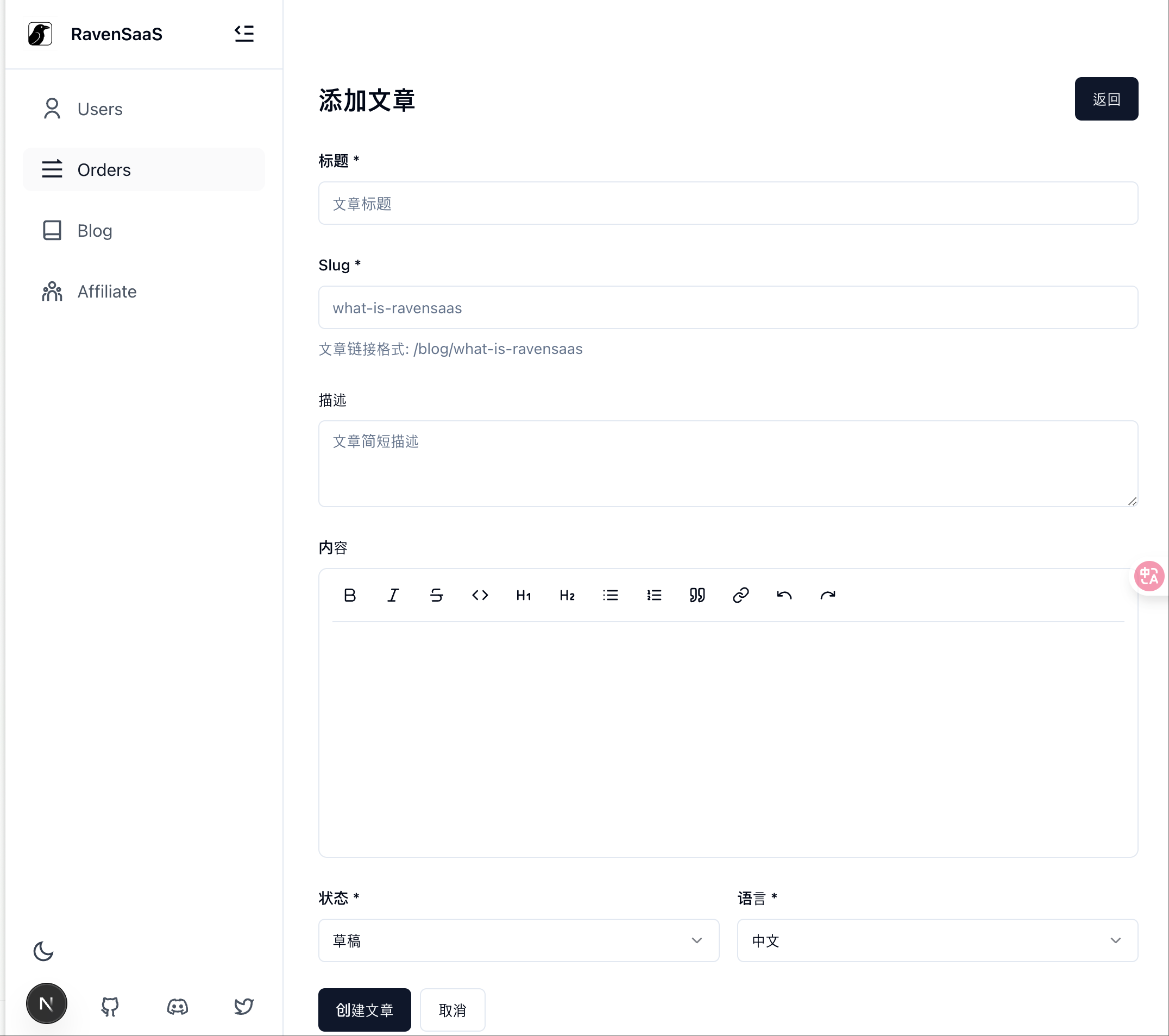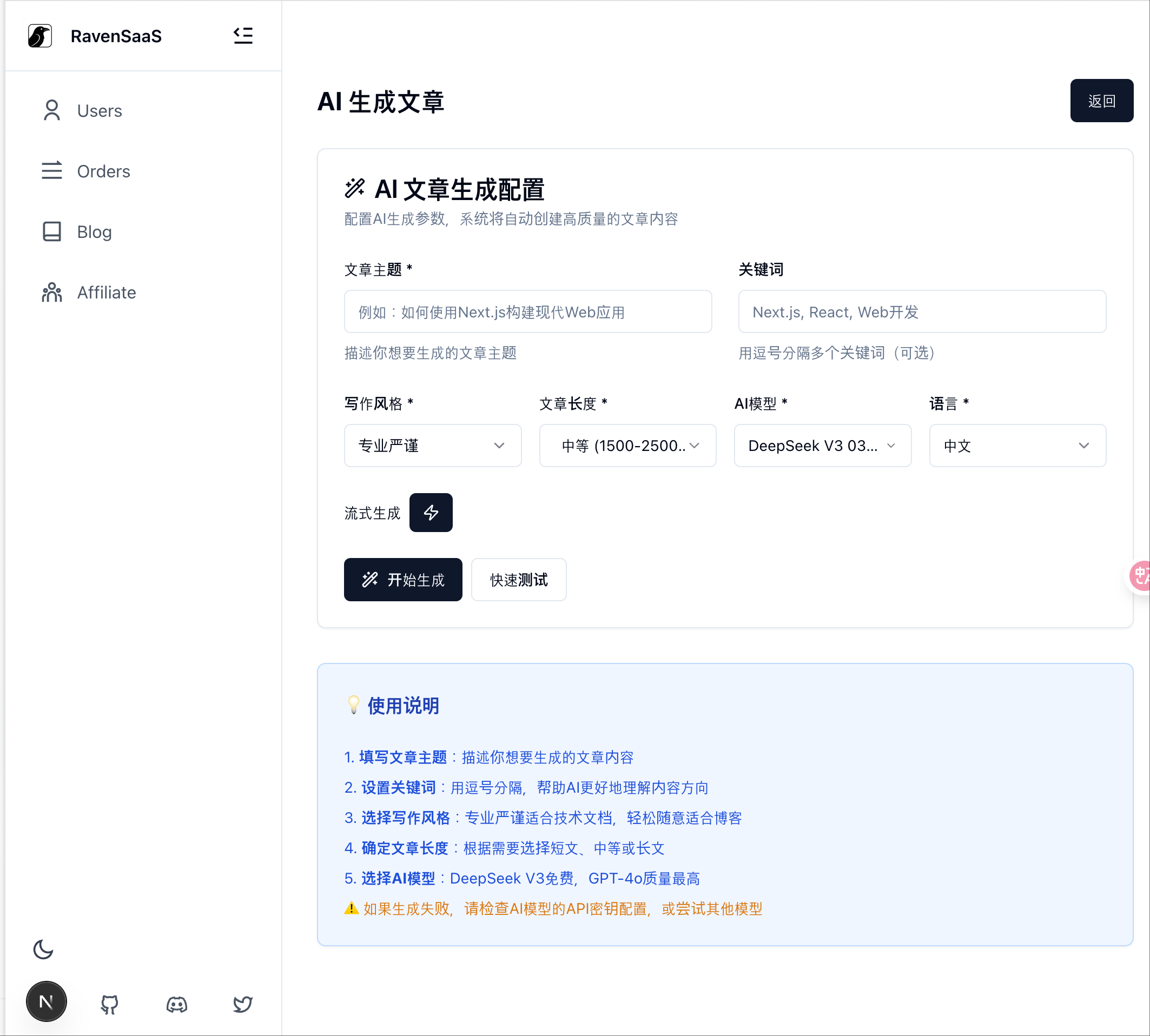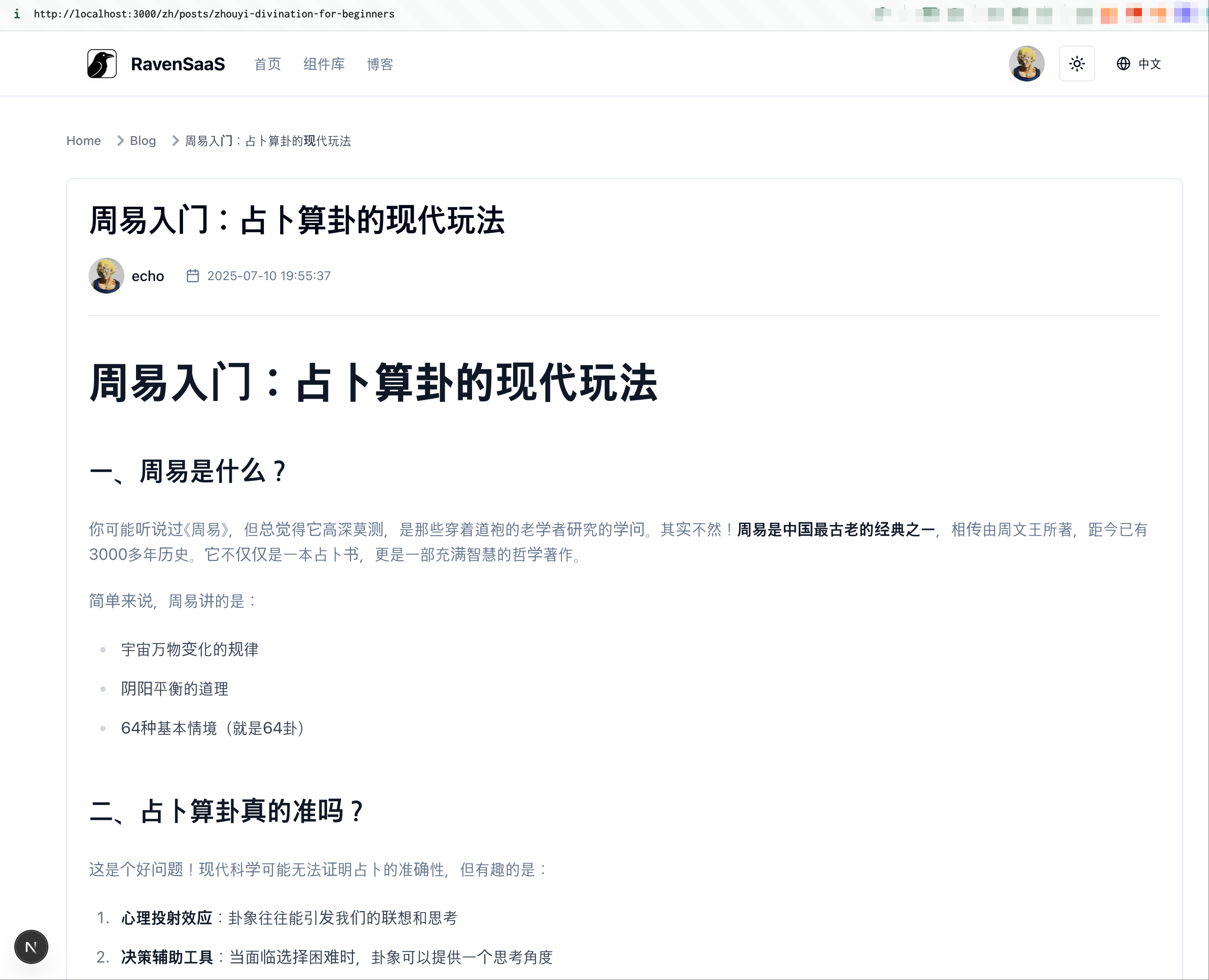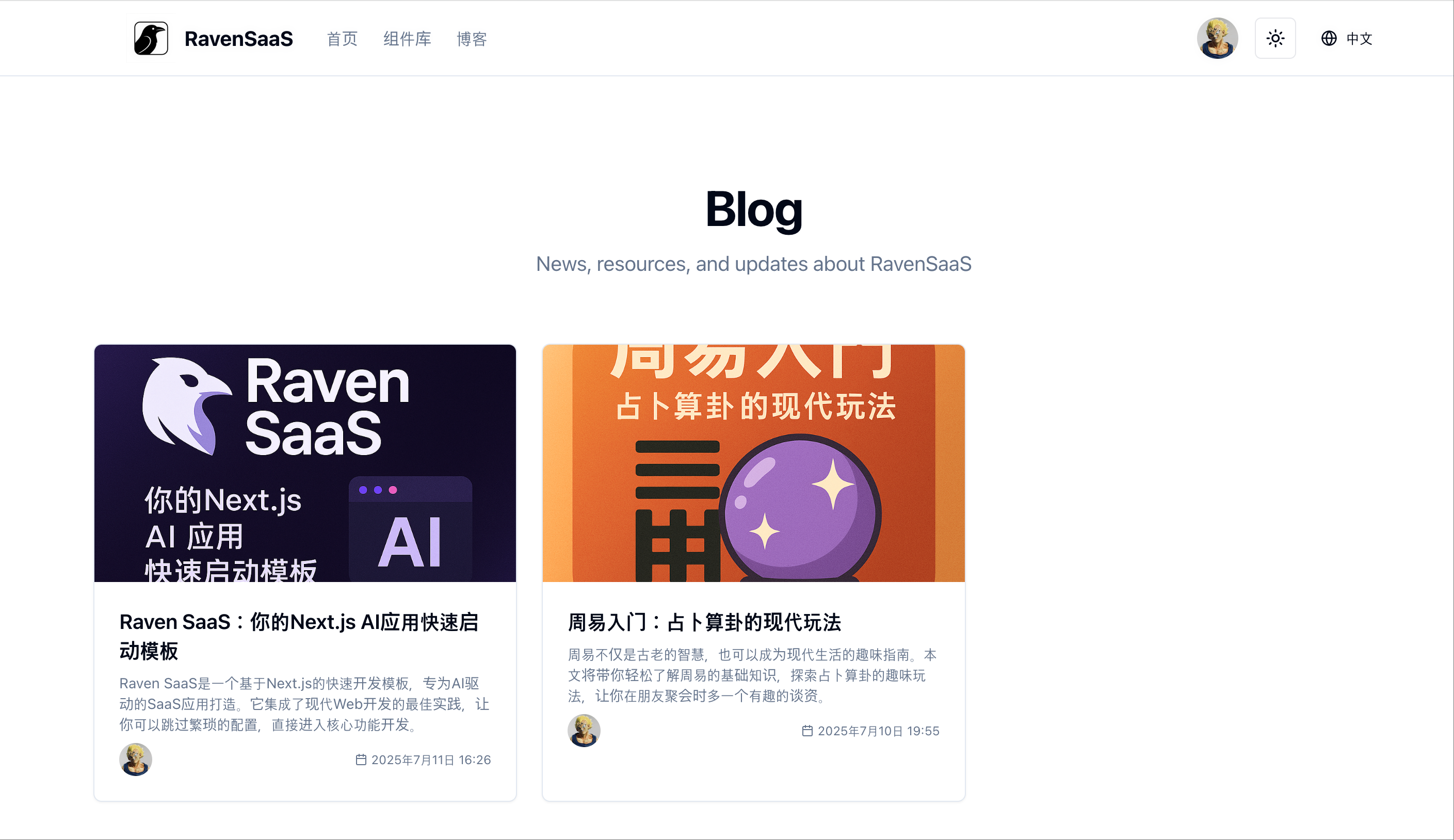Blog System
Blog Overview
RavenSaaS has a built-in CMS system for blog content management with multi-language support. Through the visual management backend, you can easily create and manage blog content.
Configure CMS
Before using the blog functionality, you need to complete database configuration and admin backend configuration.
Prerequisites
Create Data Table
You need to create a data table in the database to store blog content:
1CREATE TABLE posts (
2 id SERIAL PRIMARY KEY,
3 uuid VARCHAR(255) UNIQUE NOT NULL,
4 slug VARCHAR(255),
5 title VARCHAR(255),
6 description TEXT,
7 content TEXT,
8 created_at timestamptz,
9 updated_at timestamptz,
10 status VARCHAR(50),
11 cover_url VARCHAR(255),
12 author_name VARCHAR(255),
13 author_avatar_url VARCHAR(255),
14 locale VARCHAR(50)
15);Manage Blog Content
1. Enter Blog Backend
Access the blog management backend to view the blog list (empty by default):
1https://{your-domain}/admin/posts
2. Add Blog Content
Blog title and access route (slug) are required. Multi-language support is available by default, you need to select the corresponding language.

AI-generated blog content is also supported (requires AI configuration)

3. View Blog Content
Open the blog route to view blog content:
1https://{your-domain}/{locale}/posts/{slug}
4. View Blog List
Access the blog list frontend route to see the blog content added in the backend:
1https://{your-domain}/{locale}/posts
Configure Blog Routes
The default blog route is /posts, you can customize blog routes as needed.
Default Routes
Blog List
Access blog list page:
/{locale}/postsBlog Detail
Access blog detail page:
/{locale}/posts/{slug}Custom Routes
If you want to use other blog routes, for example:
/blogs/blogs to access blog list/blog/:slug/blog/:slug to access blog details
You need to add custom folders and refer to the app/[locale]/posts folder to organize custom code.
1app/[locale]/
2├── blogs/
3│ ├── page.tsx # 博客列表页
4│ └── [slug]/
5│ └── page.tsx # 博客详情页
6└── blog/
7 └── [slug]/
8 └── page.tsx # 另一种博客详情页路由Last updated on January 5, 2025
